JULY WILDFLOWERS
8/1/20
Summer brings its own flowers, many who have been greening up since winter. A few earlier bloomers are still going as well, including Mock Strawberry, Cat’s Ear, White Clover, Carolina Horsenettle, Smooth Spiderwort, and Rough Daisy Fleabane. Here are the new flowers of July.
American Beauty-Berry (Callicarpa americana). These plants are now almost 4' tall, with large (3–6"), opposite, hairy, toothed leaves. The flowers grow from the axils of the leaves and consist of tiny lavender flowers with five lobes. When the open, they sport long yellow-tipped anthers. The older brown stems have numerous white scales, and the newer green stems are covered in clusters of white hairs.
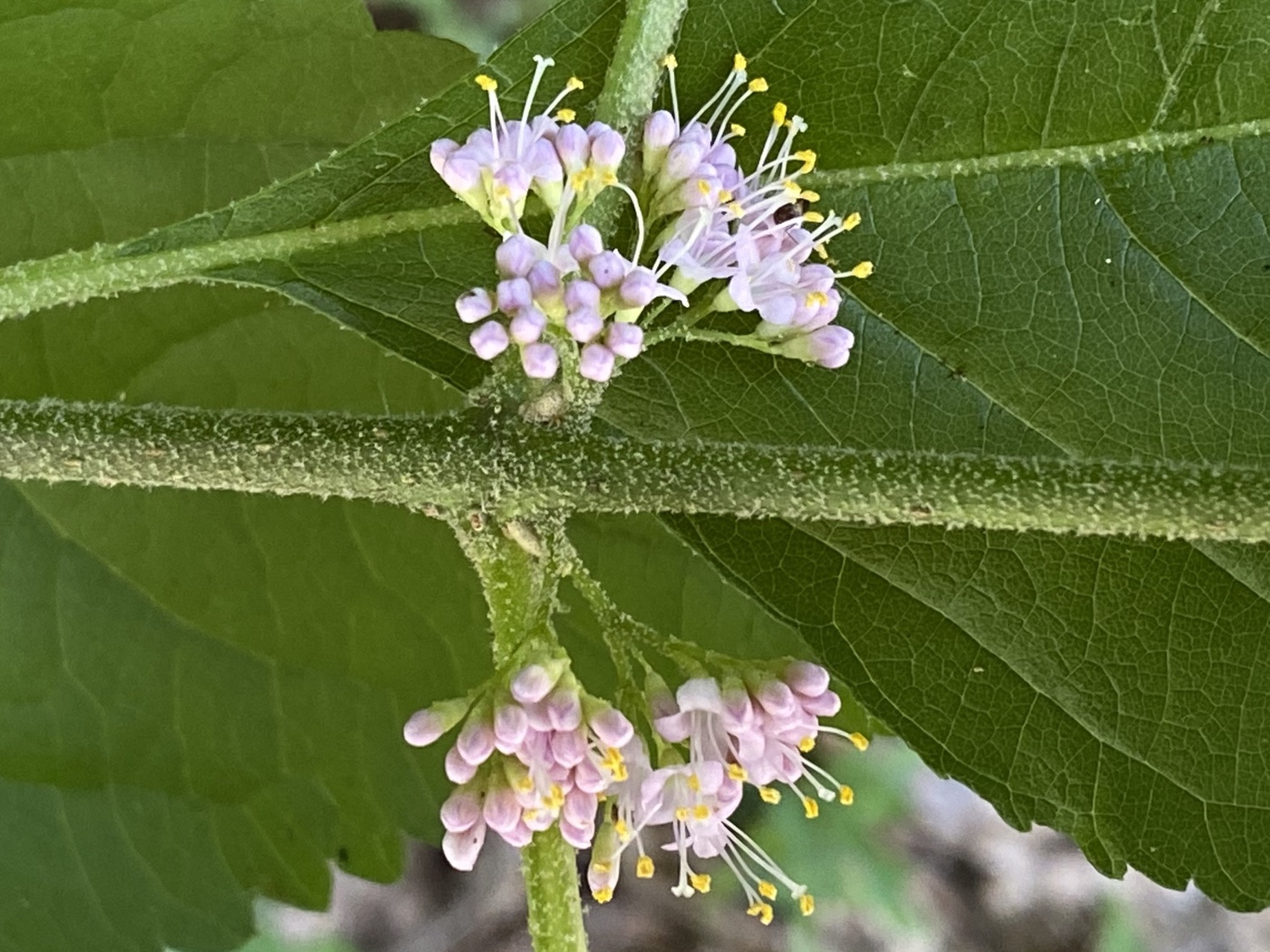
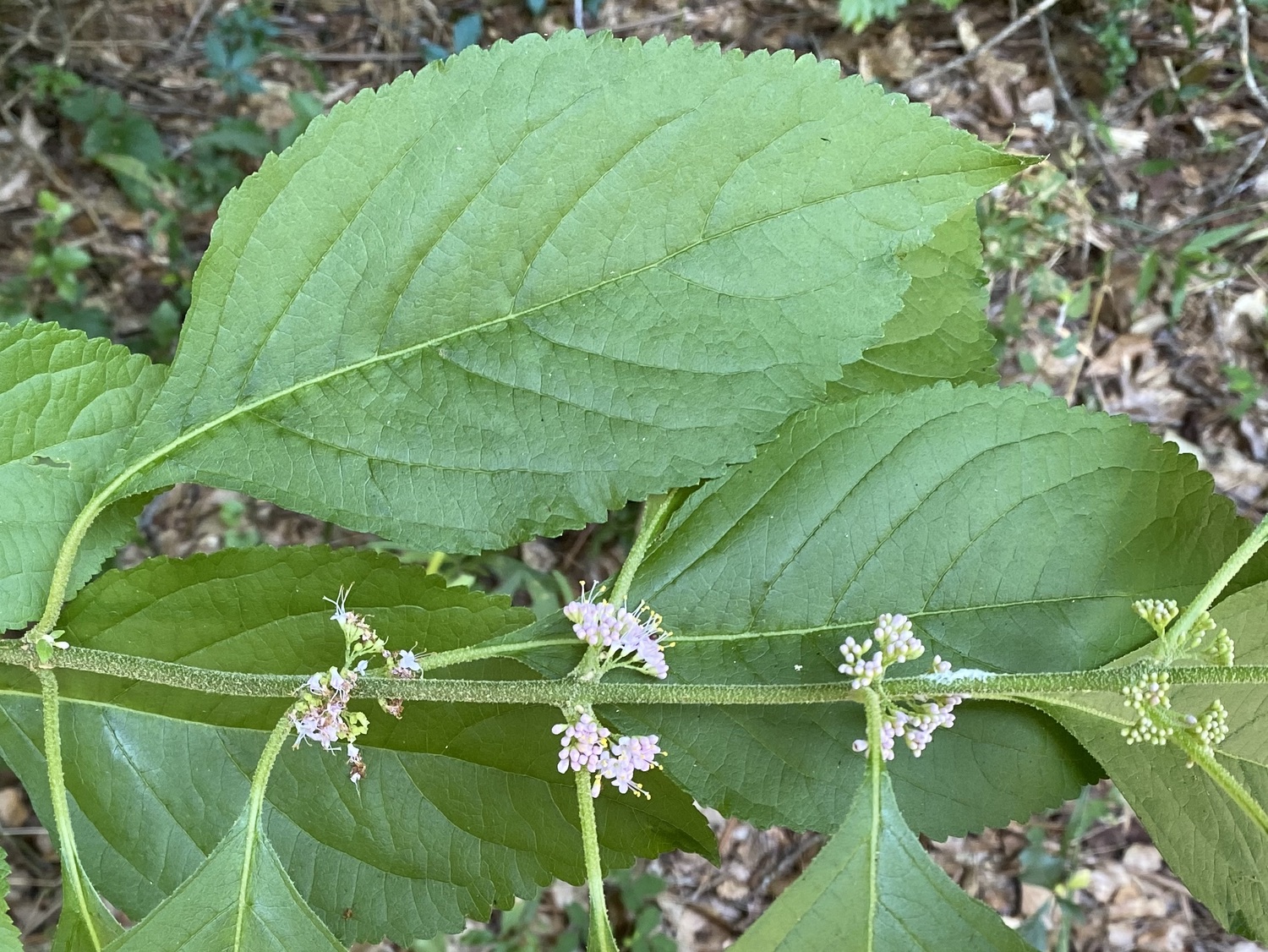
Bear’s Foot (Smallanthus uvedalius, also called Yellow Leaf-Cup). This is another tall plant, with some being over 7' tall; some are so tall that they’re falling over. The leaves are enormous, over a foot long and deeply lobed and toothed; they are also hairy and opposite. It’s immediately recognizable as being in the aster family, with its compound flowers. It has eight or more lined yellow ray flowers, with a central head of tiny yellow flowers. The half-dozen or so green bract can be seen between the ray flowers.
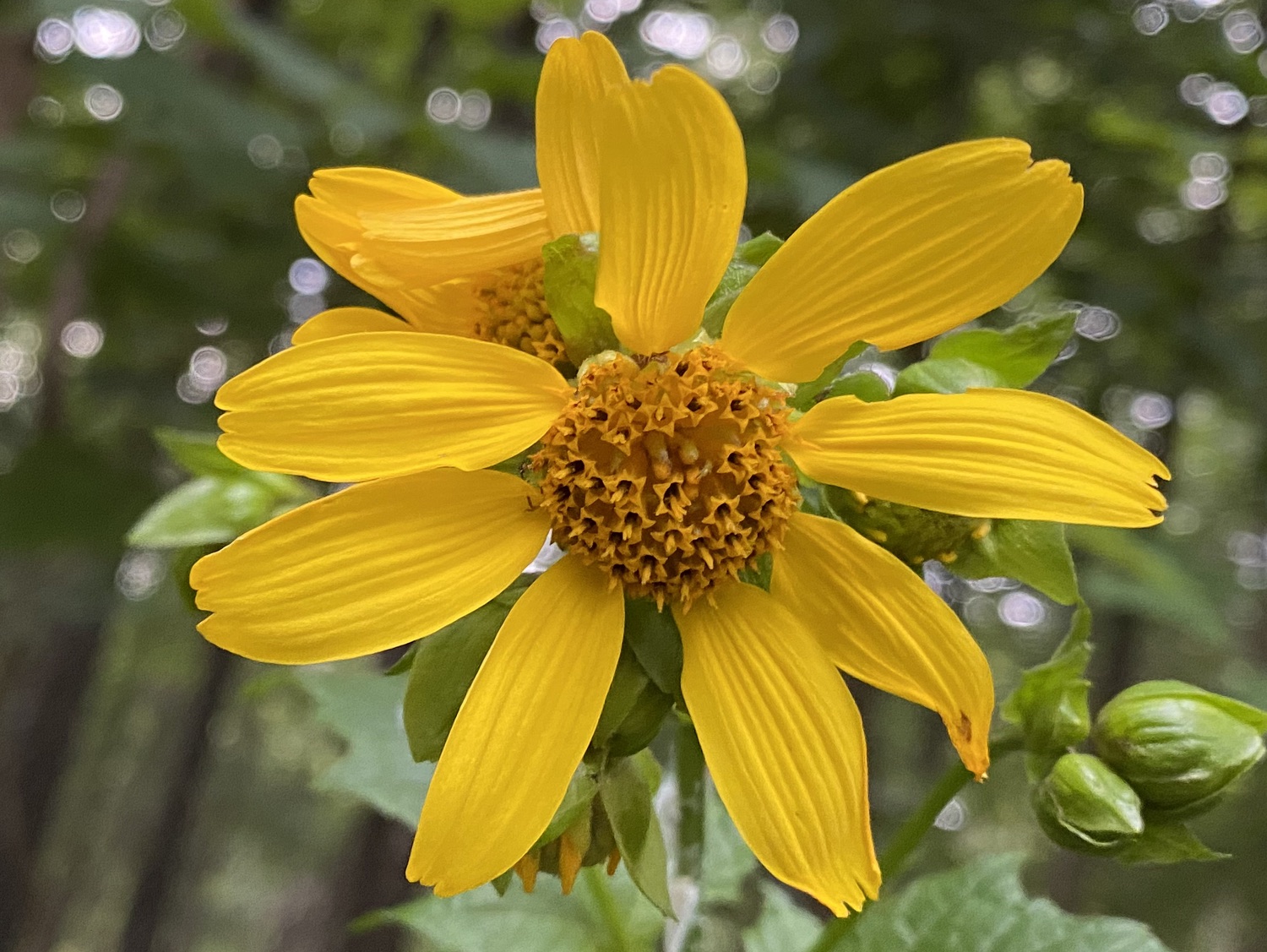

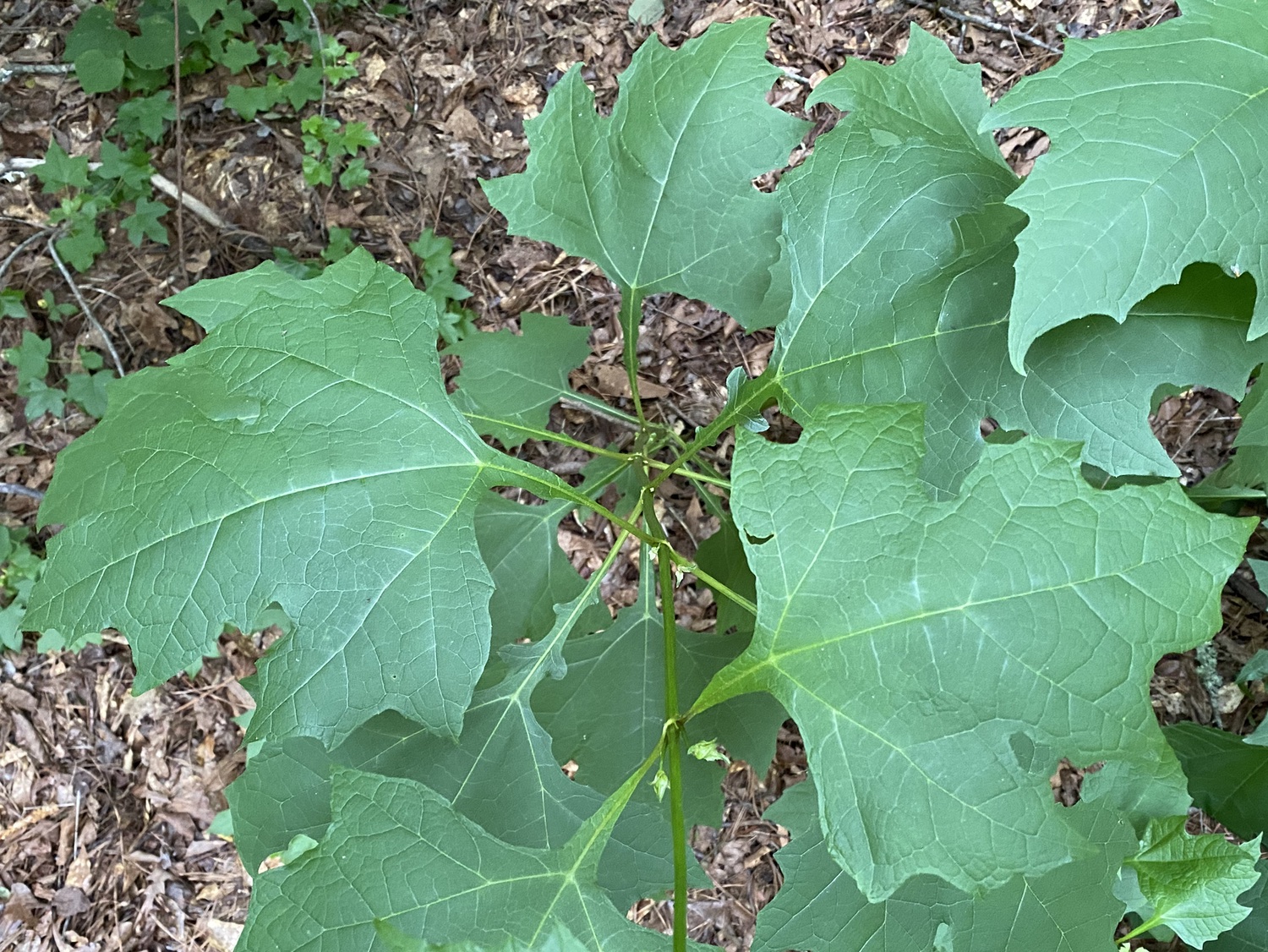
May-Pop (Passiflora incarnata, also called Purple Passion-Flower). These are completely unmistakable. Although these vines apparently grow in the wild (I’ve not yet seen them), those shown here are growing on a trellis over our mailbox. The flowers produce an oval green fruit, which is apparently edible, and I’ll give them a try this year. The leaves have three well-developed lobes, are toothed, and have pointed tips. Actively growing stems send out long (3–4") tendrils that coil tightly around whatever they touch, allowing the vine to climb quickly.
Bumblebees are attracted to the flowers. Butterflies, especially the Variegated Fritillary (Euptoieta claudia) and the Gulf Fritillary (Agraulis vanillae), love these leaves, and they will strip the plants clean by the end of summer. The Variegated Fritillary caterpillar has orange and white stripes along the length of its body, with short black spikes. The Gulf Fritillary has a solid orange body with longer black spikes.
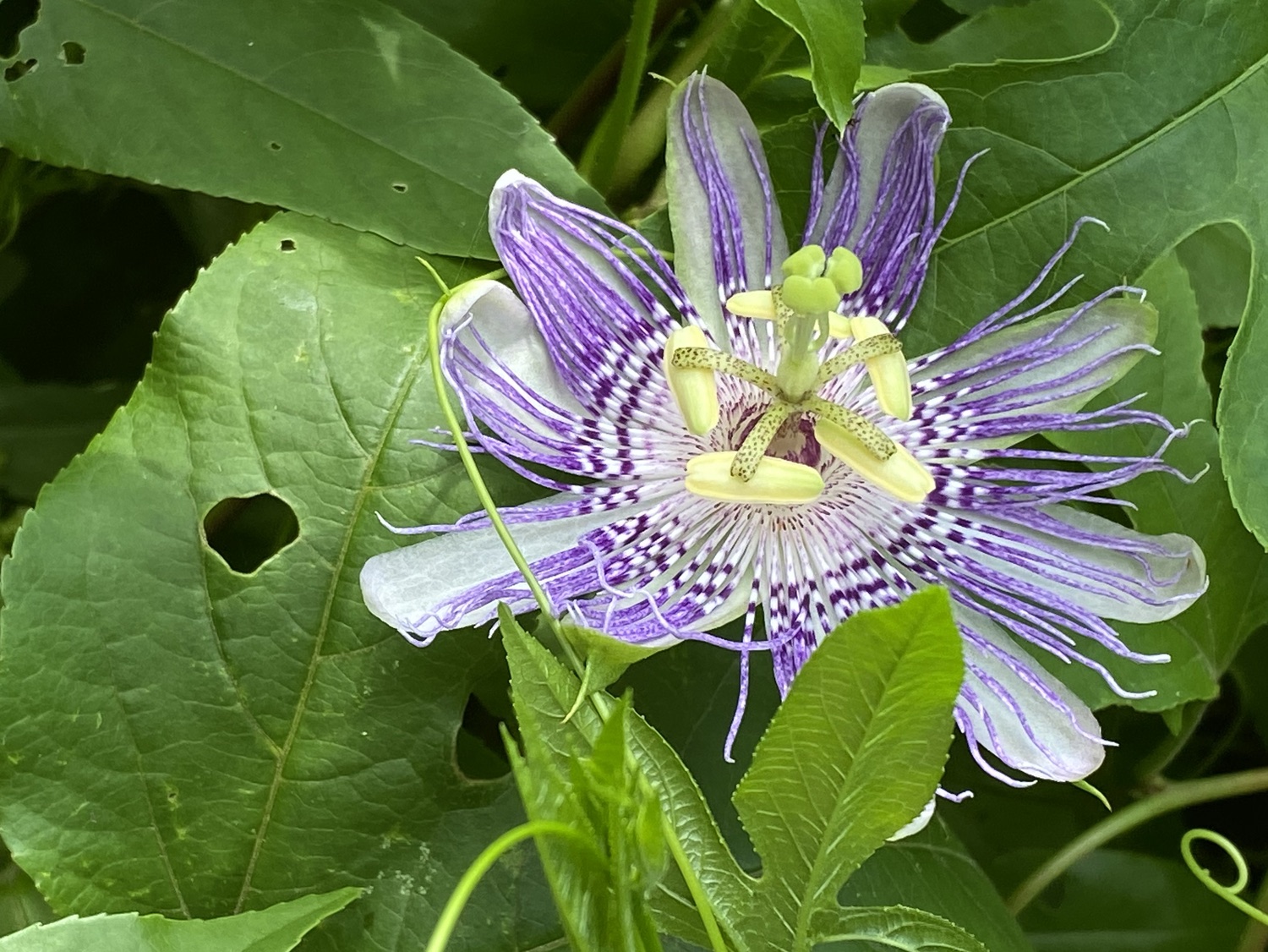
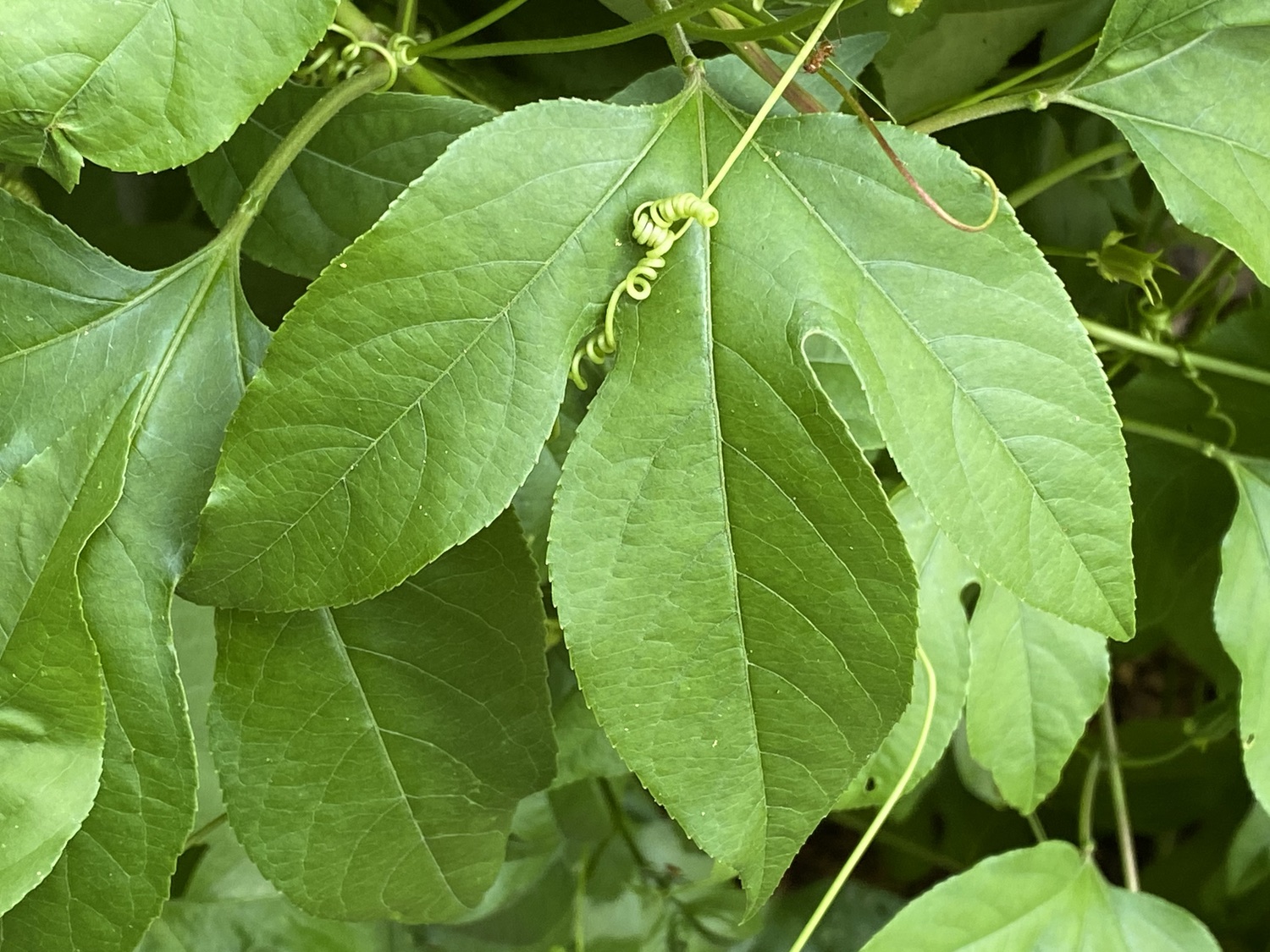
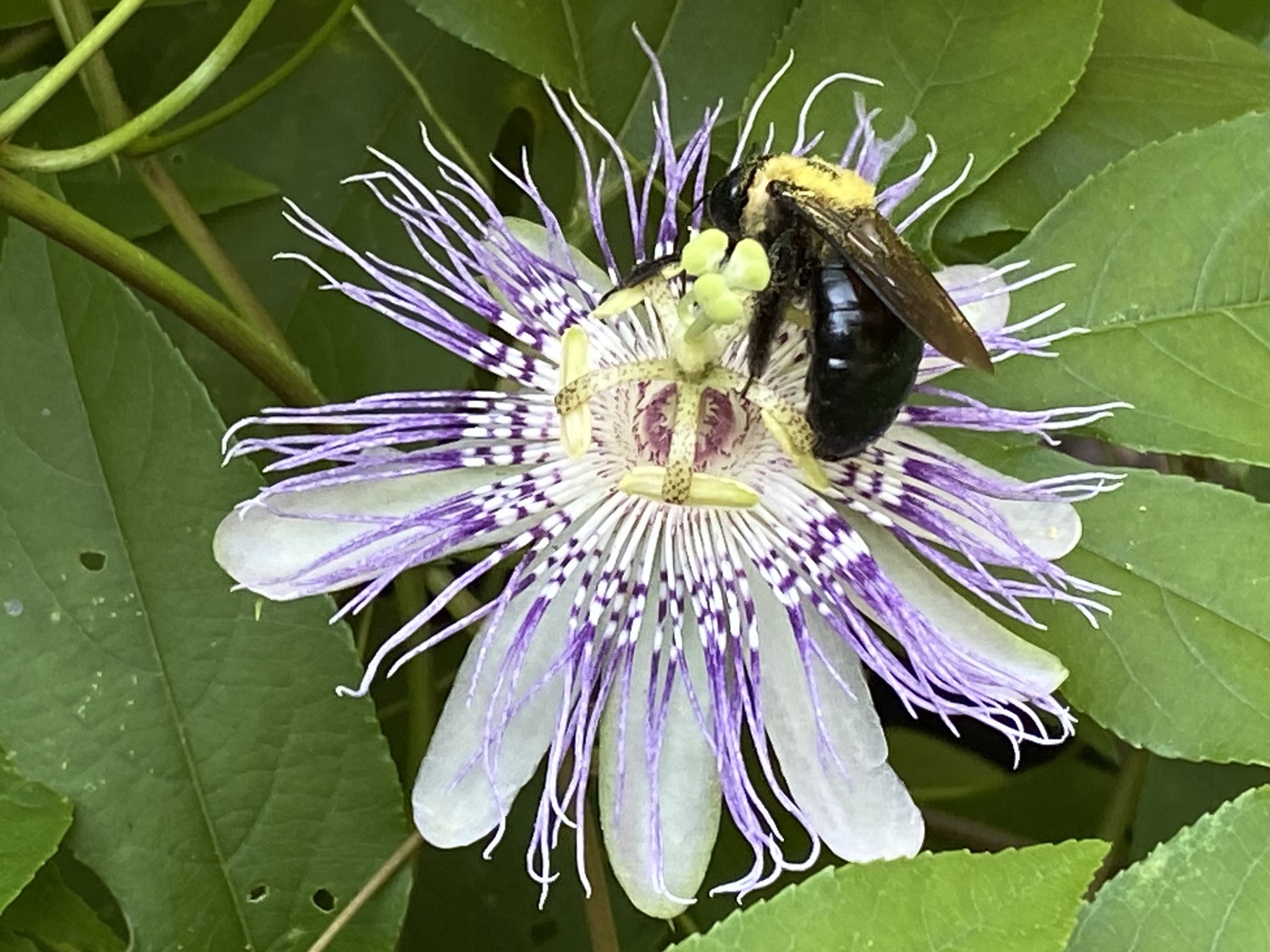
Spurred Butterfly Pea (Centrosema virginianum). These vines have been growing for a couple of months in the pine straw along our street, and they are now just blooming. The flower is about 1½" across with a large round purple banner petal with a white center, with a purple spur. The alternate leaves have the characteristic three leaflets of a pea, each usually about an inch long, sometimes longer; they are pointed (lanceolate).
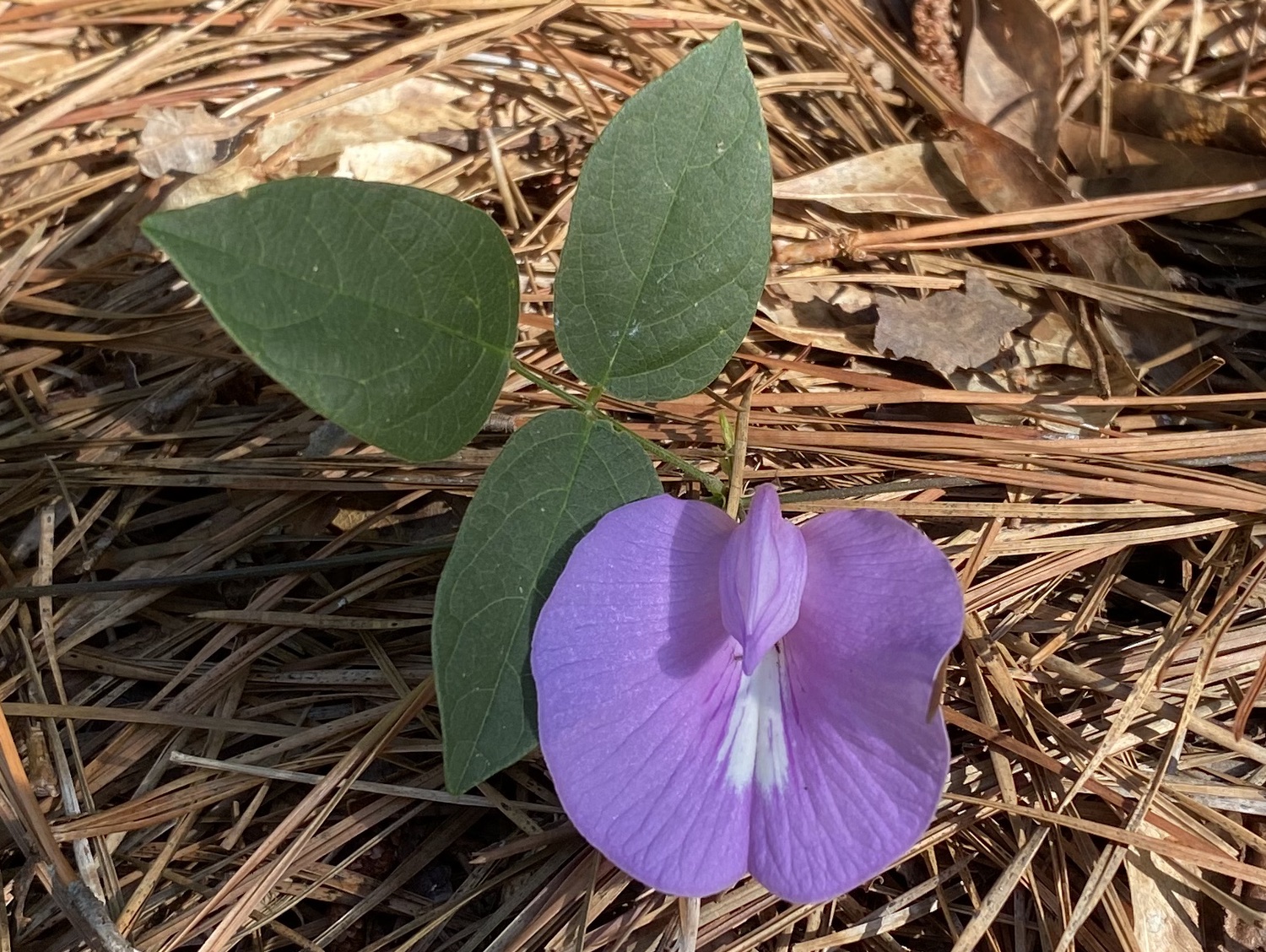
Eastern Milk-Pea (Galactia regularis). These tiny pea flowers are growing across our street, mixed in with the Spurred Butterfly Peas. The leaves have three leaflets, being distinctly oval-shaped, lacking the pointed tips of the Spurred Butterfly Pea. The stems of the Eastern Milk-Pea are finely hairy. The flowers are small (about ½") and pink, with the banner petal having darker pink and a white spot near its base.
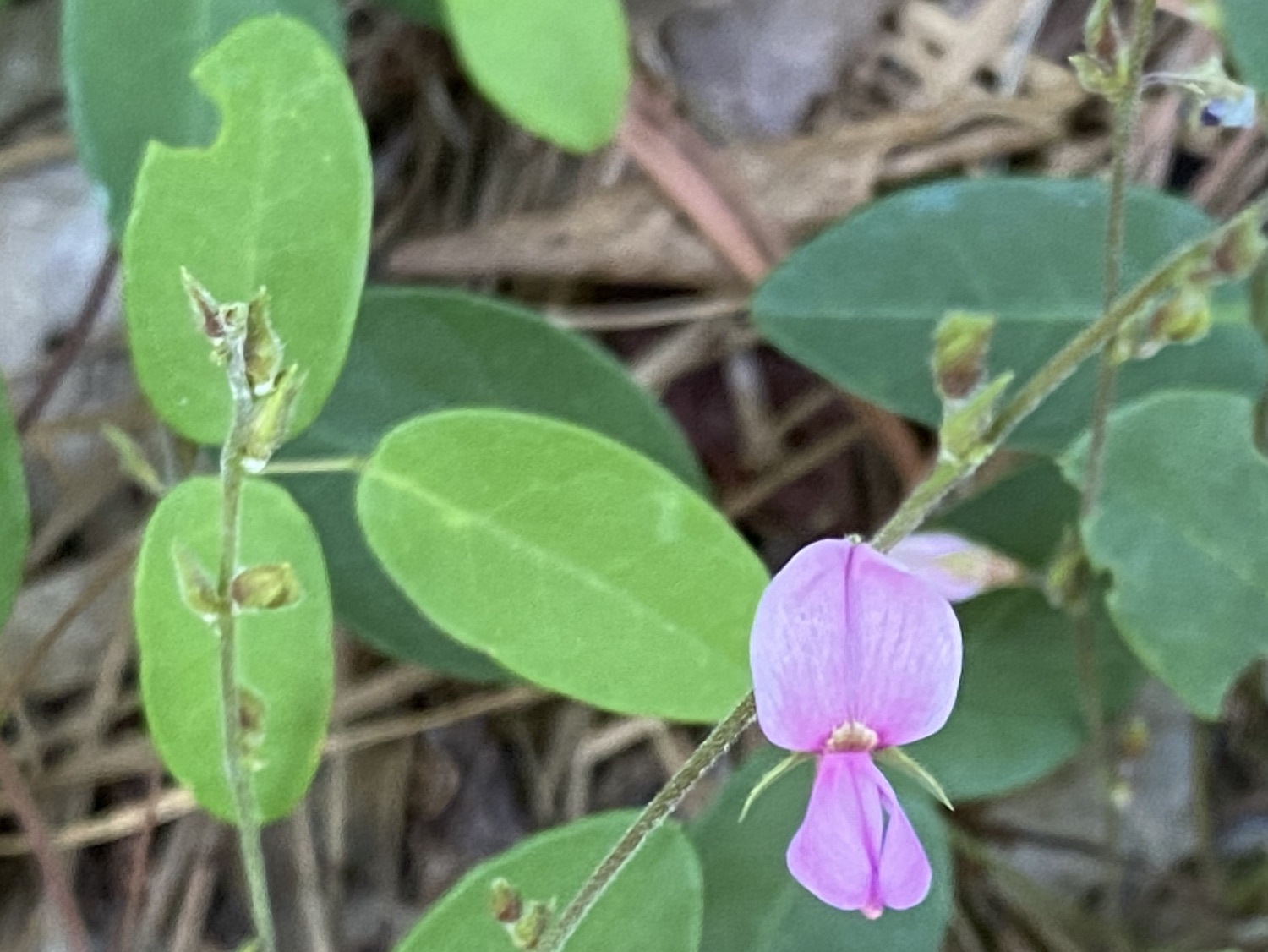
Self-Heal (Prunella vulgaris). I’ve seen these along a dry road at Scull Shoals and on the road up to Currahee, but this is the first time I’ve seen them along the river (on the White Trail) at the UGA Botanical Gardens. These are pretty distinctive, with a green knob at the top of the plant, sprouting small lavender to purple flowers all around. The leaves are opposite, elongate, pointed, and toothed.
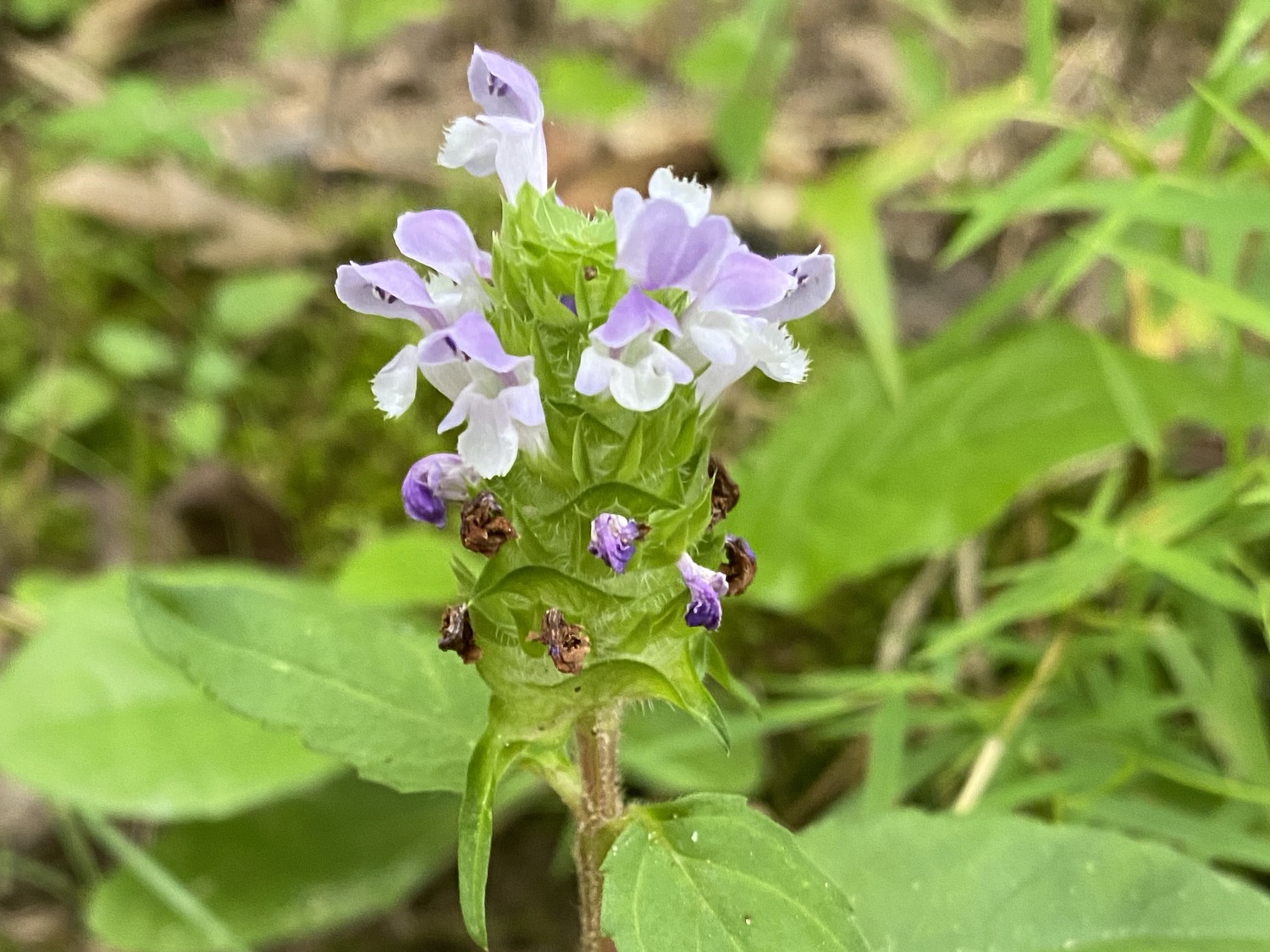
Virginia Dayflower (Commelina virginica). These have three blue petals, with the bottom one being slightly smaller, and yellow-tipped anthers. Some flowers are pale blue, others are a deep, almost cornflower blue. The leaves are alternate and smooth, coming to a point, and about 4–5 times longer than wide. A few of these were growing in a cluster along the river, along the White Trail at the UGA Botanical Gardens.


Rose Mallow (Hibiscus moscheutos). I found one of these, as a tall (12–15') shrub growing on the river levee along the White Trail in the UGA Botanical Gardens. Most of the flowers were high and hard to photograph, but they have a large white ruffly bell, with a deep maroon throat, and a prominent white pistil in the center. The leaves are broadly triangular, with three main lobes and broad teeth. The underside has stout hairs along the veins, with clusters of four stout hairs sparsely distributed across the rest of the underside (visible with a 10x lens).
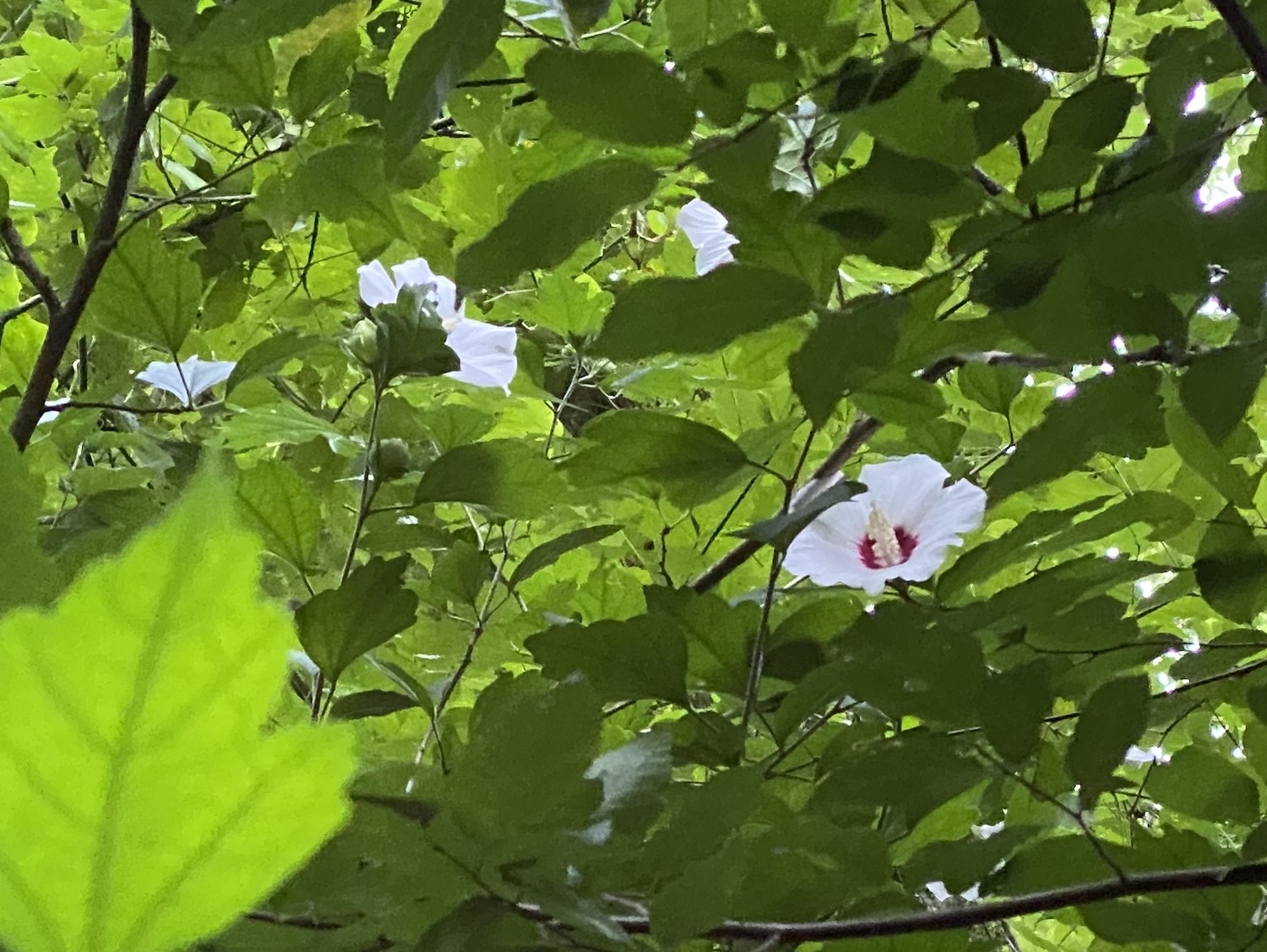
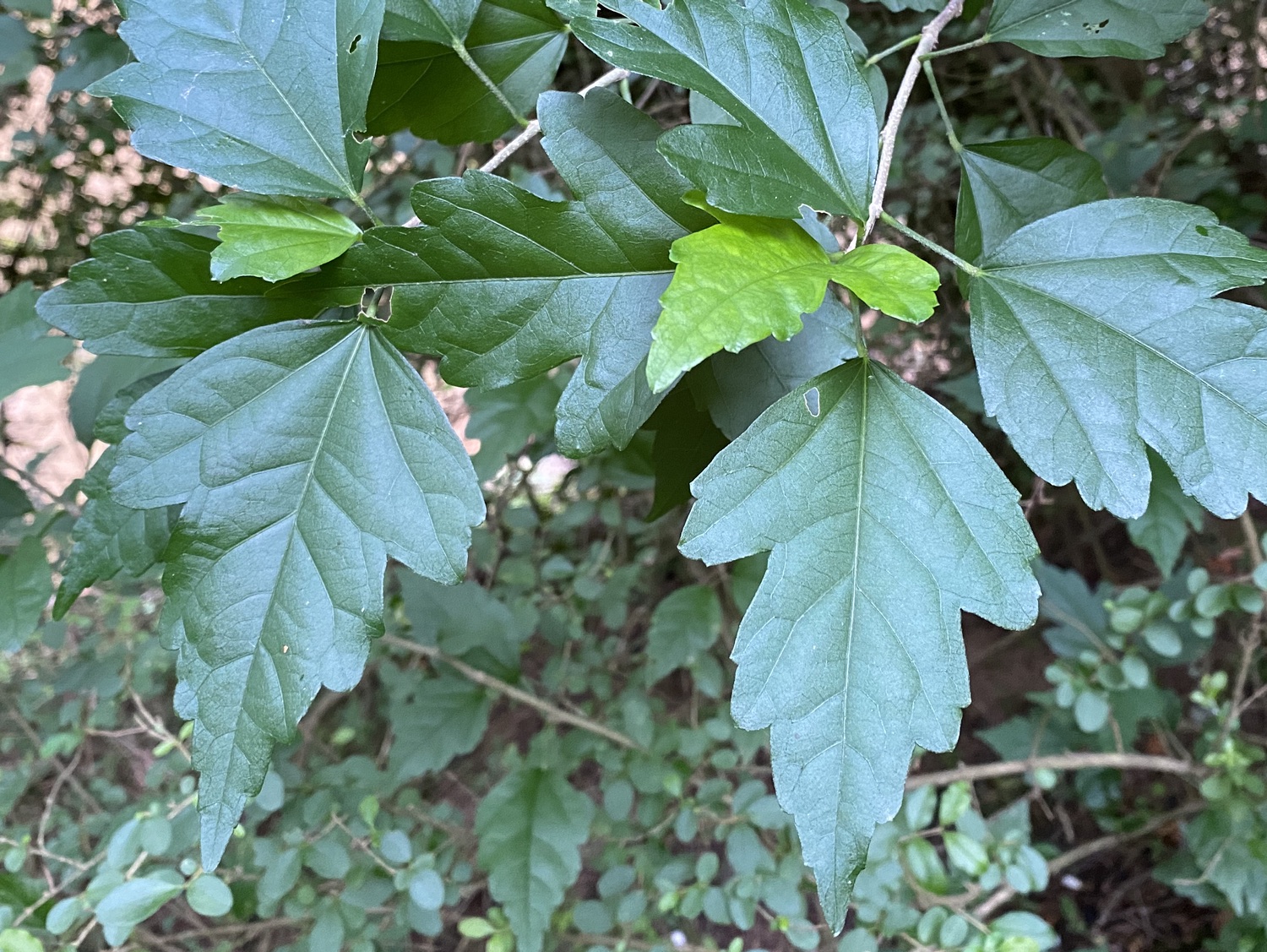
Rose-Pink (Sabatia angularis, also called Bitterbloom). These have pink petals, with a pentagonal green area at the center and long yellow anthers. The leaves are short, opposite, and stalkless. A few of these were growing in the uppermost part of the power-line cut at the UGA Botanical Gardens, along the White Trail.
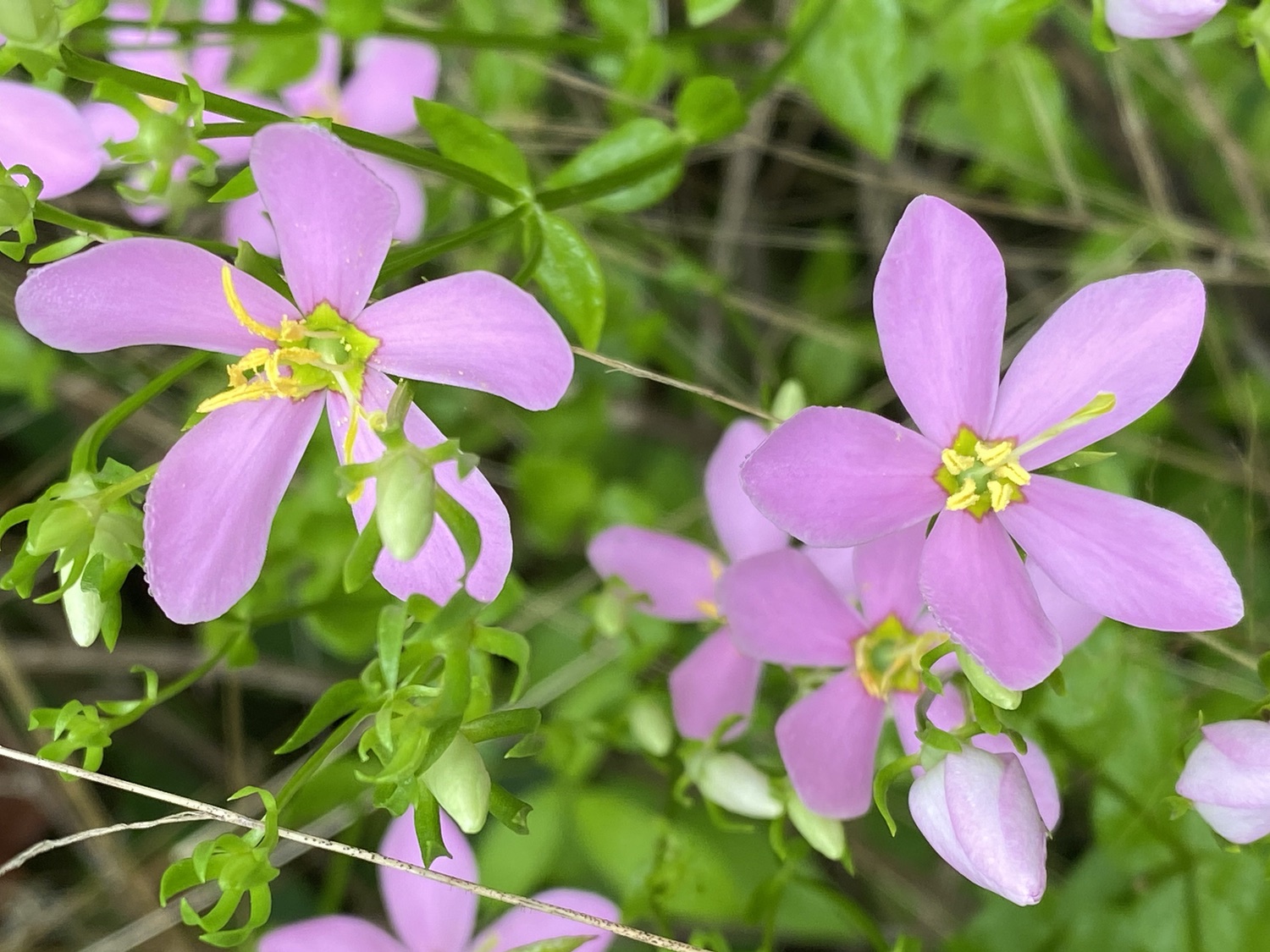
Hoary Mountain-Mint (Pycnanthemum incanum, also called White Horse-Mint). The flower heads are at the ends of the stems, and they consist of a complex array of narrow white bracts and pale pink-purple flowers with purple spots. The bracts (or leaves) just under these flower clusters are silvery white. Farther down, the leaves are green, opposite, and sparsely toothed. The plant is 2' tall, with a reddish-brown, four-angled stem. A few these plants were growing together in the uppermost power-line cut at the UGA Botanical Gardens, along the White Trail. The genus name means “densely flowered”—a great way to describe these!
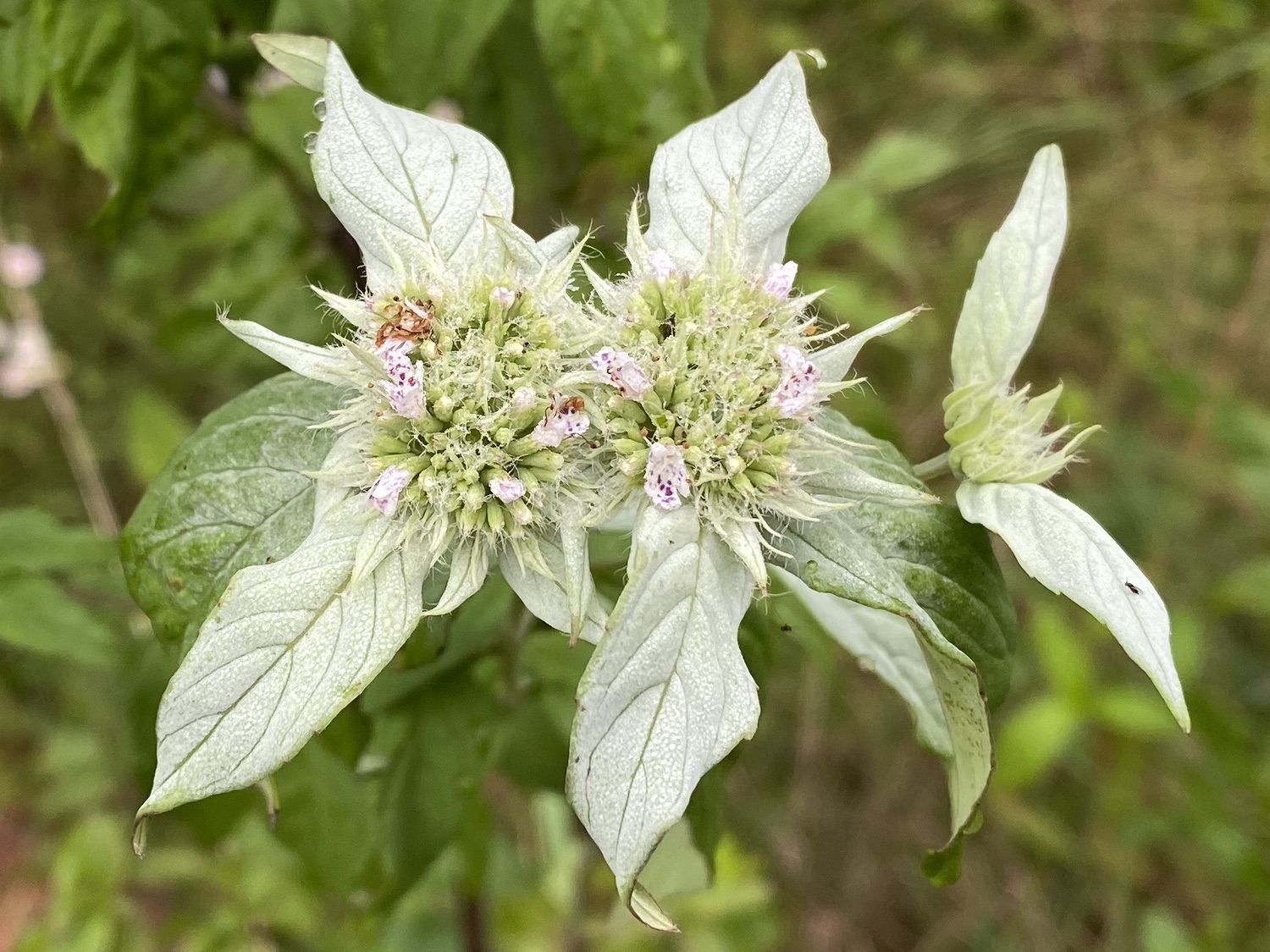
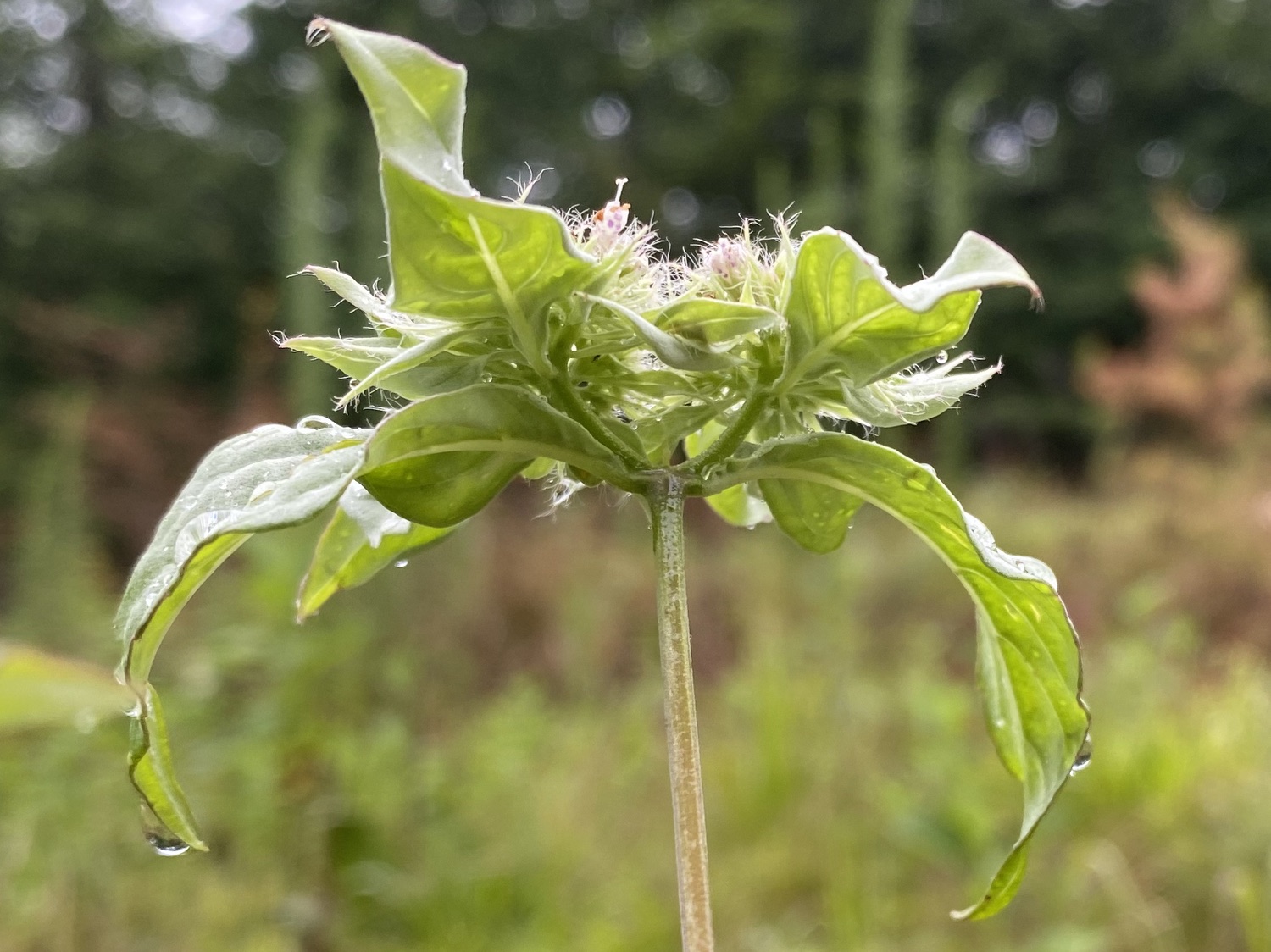
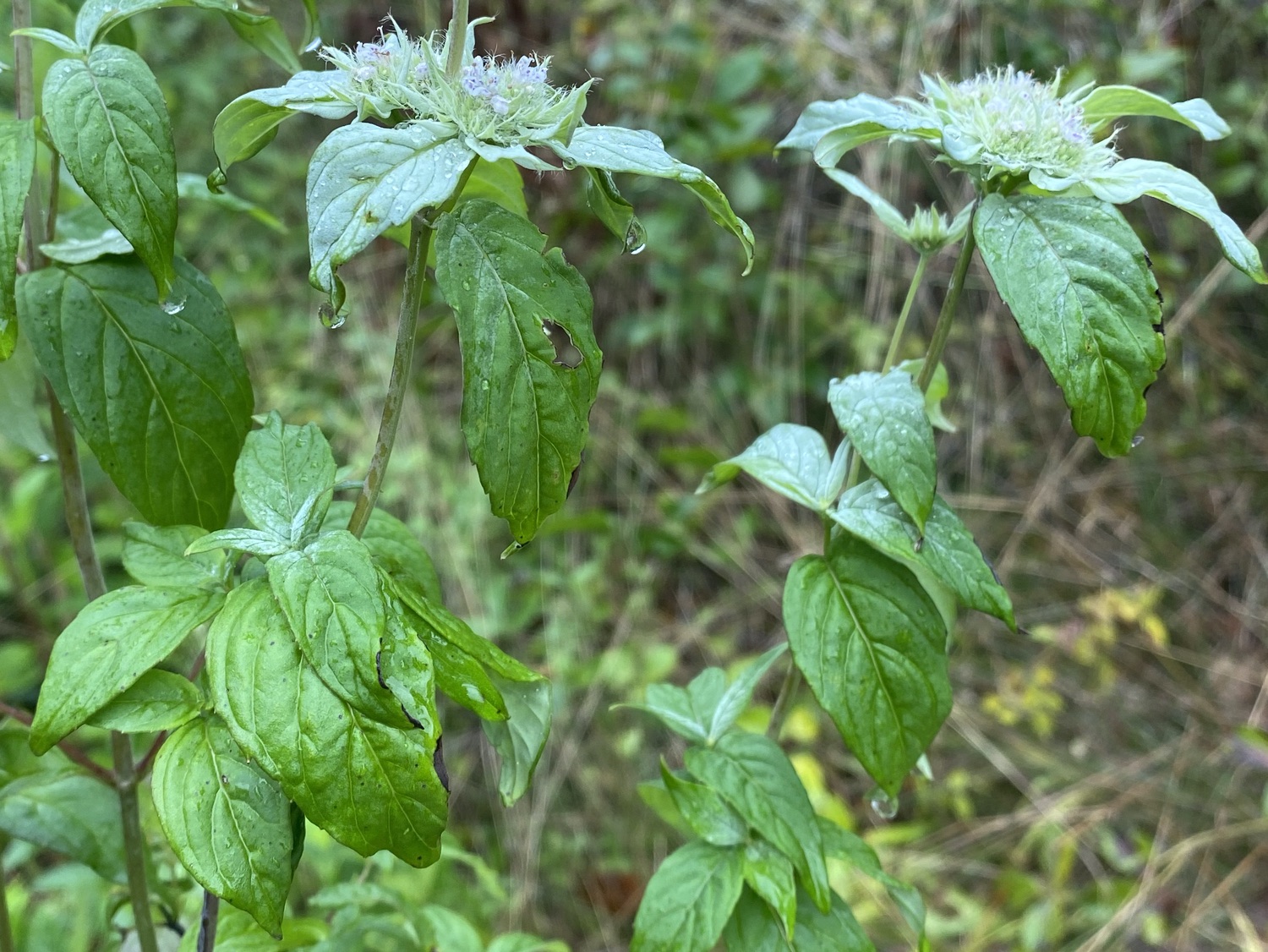
Virginia Buttonweed (Diodia virginiana, sometimes spelled D. virginica, also called Smooth Buttonweed). The flowers are about ½" across, with four hairy-edged white petals, and long white-tipped anthers. The flowers grow from the axils of the leaves. The leaves are opposite, elongate, and pointed, and they are hairy. The stem is four sided, and it is also hairy. One plant of this was growing in the power-line cut at the UGA Botanical Gardens, odd given that it is reported to like wet or moist sites. Several websites say that this is a problem weed, one calling it the #1 weed problem of southern lawns. Although it is described as a sprawling plant, these were growing upright, possibly by using other plants as a framework.
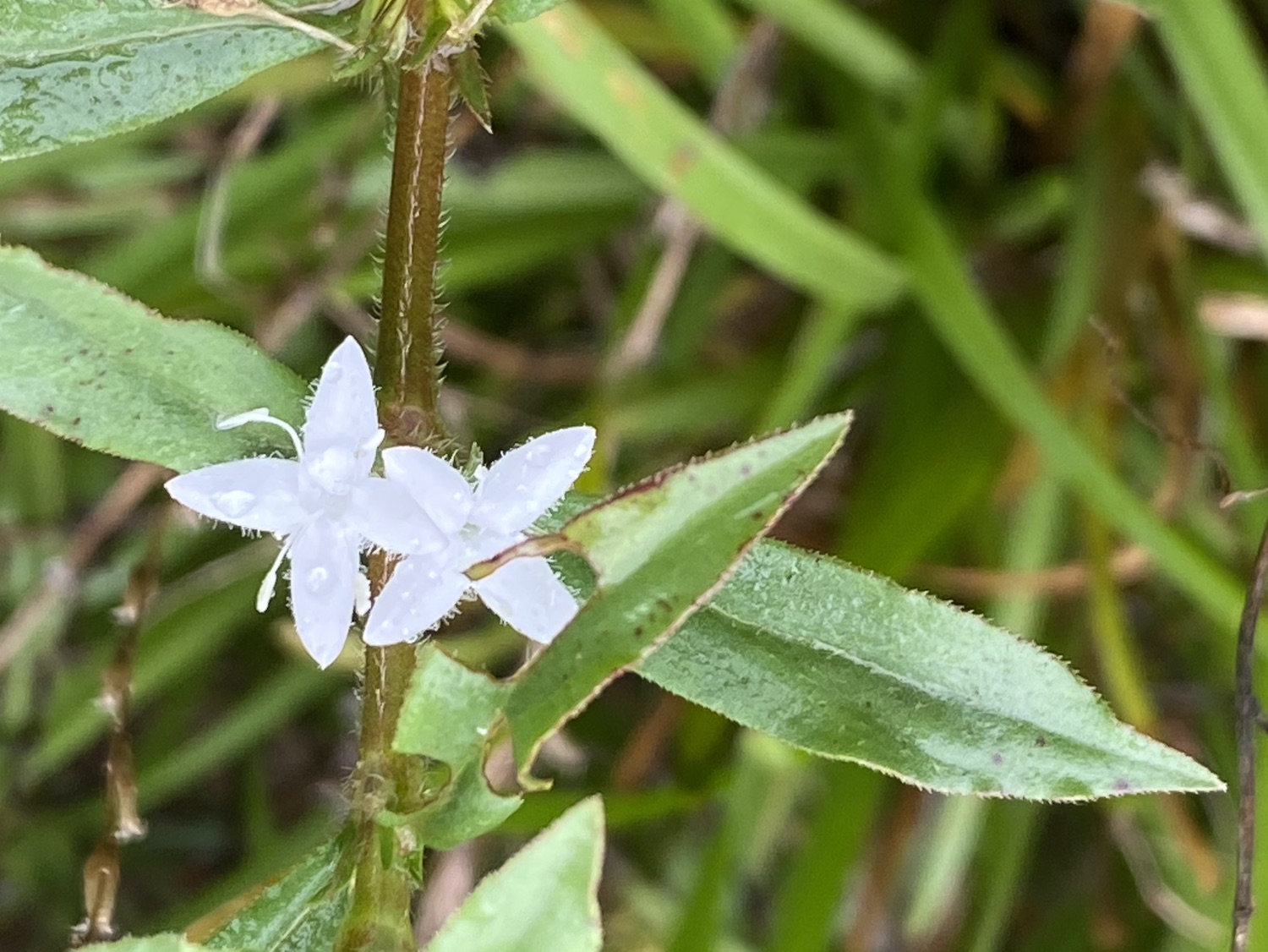
References
Chafin, L.G. 2016. Field Guide to the Wildflowers of Georgia and Surrounding States. The University of Georgia Press, Athens, Georgia.
Duncan, W.H., and M.B. Duncan. 1999. Wildflowers of the Eastern United States. The University of Georgia Press, Athens, Georgia.